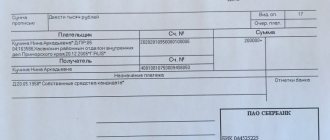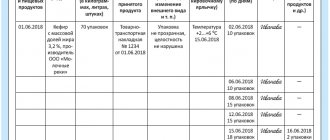Taxes and fees
Marina Dmitrieva
Leading expert - professional accountant
Current as of December 14, 2019
The Single Simplified Declaration (SUD) is a special form of tax reporting that can only be used in certain situations and not for all taxes. Read more about the conditions for its use in our material.
Who submits a single simplified declaration
The possibility of filing a special tax report - a single (simplified) tax return - is indicated by clause 2 of Art. 80 Tax Code of the Russian Federation. It is permitted to use this document instead of regular declarations if the taxpayer (legal entity or individual entrepreneur) did not conduct business activities during the reporting period.
In other words, if he didn't have:
- cash flows;
- taxable objects.
In this case, the taxpayer must have the obligation to submit tax reports, even if they are generated with zero indicators (and such an obligation, in the absence of an object subject to taxation, does not arise for all taxes).
Another condition limiting the possibility of using the EUD is that specified in paragraph 2 of Art. 80 of the Tax Code of the Russian Federation, the frequency of its submission is after each period ending at the end of the next quarter, which makes this document inapplicable to taxes for which monthly reporting is established by law.
The procedure for submitting a declaration and sanctions for violation
The EUND must be submitted no later than the 20th day of the following month after the end of each reporting period (quarter, six, nine months and year). This is established by clause 2 of Art. 80 Tax Code of the Russian Federation.
Because October 20, 2018 is a day off, then you must submit a single simplified declaration for 9 months of 2020 no later than October 22, 2018.
The taxpayer can choose the submission format (paper or electronic) independently.
The fine for failure to submit a tax return is provided for in Art. 119 of the Tax Code of the Russian Federation. The Code in this case connects its size with the amount of unpaid tax. Because The EUND by its nature does not contain the amount to be paid, then a minimum fine is applied - 1000 rubles.
You also need to keep the following in mind. Declarations for all taxes that can be replaced by EUND must be submitted later than this report. Therefore, if a taxpayer submitted the EUND after the deadline established for it, but earlier than the deadlines provided for filing other declarations, then a fine will be applied to him specifically for the delay in the EUND.
If the taxpayer missed the deadlines for the “replaced” declarations, then the tax authorities may fine him for failure to submit each of them. In this case, officials will assume that the businessman has not exercised his right to simplified reporting and, therefore, is obliged to submit “zero” declarations separately (letter of the Ministry of Finance dated November 26, 2007 No. 03-02-07/2-190).
Additionally, officials may be fined in the amount of 300 to 500 rubles. according to Art. 15.5 Code of Administrative Offences.
Also (if there is a delay of more than 10 days), tax authorities can block the taxpayer’s accounts on the basis of clause 3 of Art. 76 Tax Code of the Russian Federation. The absence of a tax amount to be paid in this situation does not matter.
What taxes does the EUD replace?
Based on the above restrictions, the following taxes should be included in a single declaration:
- the obligation to submit a report on which is not canceled by the fact that there is no taxable object;
- with a reporting frequency that is a multiple of a quarter (it can be equal to a quarter, half a year, 9 months and a year).
Those that meet both conditions simultaneously include:
- income tax - with reporting generated on an accrual basis on a quarterly basis;
- VAT - a report on it is compiled based on the results of each past quarter;
- simplified tax system - here the report is generated once at the end of the year;
- Unified Agricultural Tax - it also requires drawing up 1 report at the end of the year.
Deadline for submitting the declaration
As a general rule, the report must be submitted no later than 20 days after the end of the period for which it is submitted (quarter, half-year, 9 months or year). In some cases, this report is submitted only for the year, in particular, for income and property taxes or the simplified tax system. In these cases, it must be submitted before January 20 of the year following the reporting year. The EUD for the 3rd quarter of 2020 is submitted until October 20, 2020. The law provides for the following deadlines for a simplified report:
- for the first quarter - until April 20;
- for the second quarter - until July 20;
- for the third quarter - until October 20;
- for the fourth quarter - until January 20.
IMPORTANT!
Due to the coronavirus epidemic, the deadline for submitting the report for the 1st quarter has been extended until July 20, 2020. No other changes are envisaged.
What form should I use to submit the EUD for 2020?
The form on which the EUD-2019 will be generated is approved by Order of the Ministry of Finance of the Russian Federation dated July 10, 2007 No. 62n. And the same document reflects the procedure used when preparing the declaration.
EUD form for 2020
Since the form of the form has not changed since its approval, the OKATO code is indicated as a code reflecting the territorial affiliation of the reporting entity. The Federal Tax Service of Russia recommends entering the OKTMO code in the field provided for it (Letter No. ED-4-3/18585 dated October 17, 2013).
Basic rules for filling out the declaration
When starting to fill out the declaration, which must be drawn up if the enterprise has a simplified taxation system, regardless of the type of system used, it is recommended that you start entering data in the second section of the report.
This is due to the fact that the first section contains the totals of the second.
A declaration under the simplified tax system is intended for filling out information for two of its types at once, as well as for reflecting information on the trade fee. Therefore, when compiling it, the company enters data only into those sheets that it needs, and excludes the rest from the tax report.
When filling out the declaration, you must consider the following:
- It must be remembered that the page with the title page of the declaration is always filled out. A taxpayer who finds income in the simplified tax system attaches to it sheets of sections 1.1, 2.1.1, as well as paying a trade tax (exists in some regions of the country), and also section 2.1.2.
- Entities using the simplified tax system for income and expenses must fill out the sheets in sections 2, 2.2.
- The report also includes section 3, which is intended to reflect information about target revenues for the enterprise, charitable contributions, etc.
- For these reasons, it is recommended to number the sheets in the declaration after all the sheets included in it are completed. If a report is compiled in the program, numbering is performed automatically.
- When indicating cost indicators in a report, you should proceed from the rule that only whole numbers should be entered in the columns. Therefore, the data must first be rounded according to the rules of mathematics - more than 0.5 kopecks are considered as 1 ruble, and less are discarded.
- When filling out paper forms by hand, you must use only black, purple or blue ink to enter information.
- Letter characters must be entered in printed uppercase font.
- If a taxpayer prepares a return using a computer, he must adhere to the rule that Courier New 16-18 points apply.
- The declaration does not need to be fastened with staples, stitched with thread, etc. It is recommended to simply connect the sheets with a paper clip.
- If, when filling out the report, there are blank cells left, then you need to put the “-” symbol in them. This rule applies to cases where the cell must contain the value of the indicator “0”.
Attention! The responsible person may make a mistake when filling out the report, however, there should not be any corrections in the declaration. Therefore, in this case, he will need to go through the procedure of entering data into the report again.
Features of registration and delivery of EUD in 2020
The advantages of the EUD in comparison with conventional declarations are:
- the ability to reflect data on several taxes at once and in relation to tax periods of varying lengths;
- it is not necessary to apply an electronic method of presentation to it.
But a single declaration must be submitted no later than the 20th day of the month following the end of the reporting period (clause 2 of Article 80 of the Tax Code of the Russian Federation) - significantly earlier than the deadlines established for the submission of regular tax returns reflected in the Unified Tax Code.
Because of this, the EUD is rarely used for taxes on the simplified tax system and unified agricultural tax, for which reporting is submitted one-time at the end of the year.
Using them, it is easier to generate a regular declaration with zero indicators and submit it at a much later date (before March 31 - for organizations, and if we are talking about individual entrepreneurs reporting on the simplified tax system, then even later - before April 30).
Where are the reports submitted?
According to the general rules, a declaration under the simplified tax system should be sent to the tax authorities that registered the entity, which means:
- For legal entities, the single tax report should be sent to their location (legal address);
- Entrepreneurs must submit a declaration at the place of their registration, which is recorded in the passport. This must be taken into account by those individual entrepreneurs who are registered in one region, but actually work in another.
The procedure for filling out a single simplified declaration 2019
The basic rules for filling out the EUD are presented in the table:
| Report fields | How to apply |
| TIN | TIN is filled out by both individual entrepreneurs and organizations. We enter it from left to right. Organizations put dashes in the last two empty cells |
| checkpoint | Fill in only organizations, individual entrepreneurs put dashes here |
| Document type | When submitting the report for the first time, put “1”; when submitting an update, put “3” (and indicate the correction number through the fraction) |
| Reporting year | The year for which we submit the report (in our example - 2019) |
| Federal Tax Service Authority | Code and full name of the Federal Tax Service to which the EUD 2019 is submitted |
| Name of company | The name of the reporting organization in accordance with the constituent documents. Individual entrepreneurs indicate their full name. in full (middle name - if any) |
| OKATO | OKTMO code by classifier |
| OKVED 2 | Type of economic activity of the reporting organization (IP) in accordance with the extract from the Unified State Register of Legal Entities (USRIP) |
| Taxes | Names of taxes for which the EUD is submitted. If you report on several taxes, reflect them in the order in which they appear in the Tax Code of the Russian Federation |
| Chapter number | Number of the head of the Tax Code of the Russian Federation regulating the tax |
| Tax period and quarter number | The coding depends on the tax reporting period for which the report is submitted. For taxes with a tax period of “quarter”, enter code “3” in column 3 (period). In this case, in column 4 (quarter) indicate:
For taxes with a tax period of “year” in column 3 enter:
In this case, column 4 is not filled in |
| Phone number | Contact telephone number for contacting the taxpayer in the format +74954658412 ("+" sign, country code, number) |
| Number of sheets | Number of pages in the report |
Reporting Methods
A declaration under the simplified tax system can be submitted in the following ways:
- Personally by the taxpayer or his representative to the tax authority inspector in paper form with the submission of an electronic file. In this case, two copies must be submitted on paper so that upon acceptance, the inspector can put his mark on the second one and return it to the taxpayer. In some regions, inspectors require a special barcode on the declaration form.
- Send the report via postal service with a list of attachments or courier delivery.
- Use the capabilities of electronic document management. To do this, the taxpayer must have a qualified digital signature and an agreement with a special operator. In addition, the procedure assumes the presence of a separate program or service.
Let's sum it up
- If certain conditions are met, regular tax reporting, generated with zero indicators, for a number of taxes can be replaced with a single simplified declaration, including information on several taxes at once.
- As a rule, the EUD includes income tax and VAT.
- The EUD allows you to reduce the amount of reporting generated during the period of inactivity, but it is required to be submitted earlier than a regular declaration.
- The electronic reporting form for the EUD is not mandatory.
If you find an error, please select a piece of text and press Ctrl+Enter.
Features of filling out a zero declaration under the simplified tax system
If the company was not engaged in activities during the period of filing the report, then the declaration under the simplified tax system must still be sent in accordance with the established deadlines. The main feature in this case is the inclusion of zero values in key columns.
If the subject uses the “Income” type, then the title page is filled out in full. Next, you need to fill out the sheet containing section 1.1. It is necessary to enter data in column 010. Columns 030, 060 and 090 contain data only if the organization’s address changed during the period, and for this reason the OKTMO code changed. Other columns on this sheet must contain dashes.
Also in the declaration you need to include a sheet with section 2.1.1, where the data is recorded in column 102, and the tax rate is also indicated in columns 120-123. Other columns are crossed out.
When using the “Income reduced by expenses” system, the declaration begins with a title page. After this, it is necessary to enter the OKTMO code in column 010 on the sheet with section 1.2. Columns 030, 060 and 090 are filled in if the address of the activity changes during the period. All other available columns are crossed out.
Next, take a sheet with section 2.2, in which columns 260-263 are filled in by indicating the tax rate used. All other columns are crossed out.
Methods for filing a single tax return
The law establishes three ways in which this declaration can be sent to the Federal Tax Service:
- By post - the declaration must be sent by letter with the described attachment. The second inventory with a postal mark remains in hand. The receipt from the letter will be proof of the filing date of the return;
- In person - you must fill out by hand or print two copies of the document and personally bring them to the tax office. The inspector will mark one copy and return it back.
- Via the Internet - for this you need to purchase an electronic digital signature and enter into an agreement with a reporting transmission company.
Important! If the number of employees exceeds 100 people, then the report must be submitted only using electronic means of communication.






